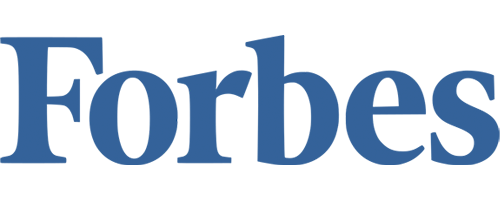Target stood out as a leader among competitors in 2020, during a year in which the entire retail industry was plagued by uncertainty and unforeseen challenges.
In a May call with investors, Target CEO Brian Cornell said that the unprecedented volatility in the first quarter of 2020 “presented the most extreme test of our business and operations that I could have imagined.”
“In that environment, we drove industry-leading growth,” he continued. “When digital demand exploded as guests began to shelter in place, our teams had the tools, processes and capability to flex to meet that shift.”
In the first quarter of the year, Target’s comparable digital sales grew 141% from February to April. It was a year like no other: Target was fulfilling more items and orders on an average day in April than last year’s Cyber Monday.
In the third quarter, Target’s comparable digital sales were up by more than 155%. Target’s same-day services – Pick Up, Drive Up and Shipt – together grew more than 200%.
How did Target’s tech team manage it?
In 2015, Target’s Chief Information Officer Mike McNamara restructured the team with a focus on bringing best-in-class IT resources and software development in-house. McNamara greatly reduced the amount of contractors and added more than 1,000 in-house engineers, according to the Wall Street Journal. Target has over 4,000 IT employees today.
Through that time, Agostino and his peers championed several talent development and organizational initiatives for technology team members. A big focus has been on leadership and change management training.
Agostino told me there are three critical factors of how Target implements its technology that proved to be game-changers in managing the digital surge this year – embracing an agile mindset, designing for flexibility, and investing in internal expertise and innovation. These three practices have enabled Target’s technology team to organize for rapid and cross-functional collaboration across the enterprise, and to anticipate and respond to sudden changes in market conditions and consumer demand.
That’s why, when the pandemic hit, Target was ready from a technology perspective.
“Our team members were able to innovate and build quickly to meet immediate enterprise needs, and that helped us outperform peers during the unfolding of a dynamic situation like COVID-19,” Agostino told me.
These principles of agility, flexible design, and investing in employee learning are all under study in greater depth at the research platform GoForwardtoWork.com, an initiative of Ferrazzi Greenlight Research Institute in collaboration with Harvard Business School and other leading institutions. I also explore them in my upcoming book, Go Forward to Work, which is a guide for transformative leaders who want to bolster their organizational growth in the post-pandemic world.
Here’s how Target’s technology team navigated and innovated this year, and served as an invisible backbone for the company’s operations under extreme demands.
Agile Mindset
When states began issuing capacity limits for in-store shopping in April 2020, Target engineers using agile project management built, in just a few days, the first version of a new mobile app that helped team members in stores manage customer flow.
Agile is a collaborative, iterative management process that’s very different from traditional project management, where a business team might take a lot of time to identify its needs for a product and then hand off a list of requirements to the technology team to “go off and build.” The approach was introduced and rolled out across the technology team through a series of coaches and structured classes, still available for any team member to access on an ongoing basis.
With agile project management, business teams drive the planning and prioritization of technology investments. Agile requires a mindset in which, as with this example, a senior leader in Target’s store operations team “owns” the customer-focused vision, roadmap, and feature prioritization for the technology that runs in Target stores. That leader will partner with Target’s tech team members in a fast-paced, iterative way that includes daily stand-up meetings to prioritize product updates and changes in line with shifting changes in customer preferences.
Agostino says that Target’s technology team adopting an agile mindset – marked by the spirit of optimism, problem solving, experimentation, learning from mistakes, and permission to fail and try again – has facilitated more seamless product development and enabled a broader culture of enterprise agility at Target.
Design for Flexibility
Built right into Target’s approach to technology is a philosophy of designing for flexibility, so that individual teams are responsible for components within an overall architecture that is highly flexible and scalable. That way changes can be made quickly and relatively easily in one component without affecting the entire system.
This approach has a profound effect on work processes and culture. Unlike the traditional approach, in which a particular business team might have its own “do-it-all” system to perform a specific function, each team at Target is now responsible for a component with a specific purpose in the overall architecture.
For example, the customer checkout process involves a series of distinct cross-functional services that must be coordinated to ensure a great customer experience. Scanning, coupon redemption, and payment authorization are all designed by different teams that must work together to achieve the advantages of flexibility and scalability.
“There’s a culture of flexibility and collaboration by design,” says Agostino. “Silos cannot exist as teams are all dependent on one another to operate and co-create solutions that ultimately deliver great experiences for Target’s guests.”
Investing in Internal Innovation
As Target aggressively built up its in-house technology workforce over the years, it was driven by belief that speed and innovation requires investment in internal expertise. If you build teams that have the right capabilities in-house to conceive of and bring ideas to life – and are empowered to learn from mistakes and pivot – you are deepening your commitment to design for a resilient and flexible organization.
Target engineers are encouraged to dedicate “50 Days of Learning” each year to learn new tech skills, improve existing talents, and experiment with new technologies via internal education offerings, incubation programs, and innovation hackathons. Non-tech leaders across Target are invited to participate in the innovation process by attending quarterly “Demo Days” – a “science fair” type of setting where teams show off their latest tech ideas and creations.
As Covid-19 infection rates grew in early 2020, several of Target’s innovation programs came together to focus on new products and solutions for safety. Target’s flexible and speedy cross-functional approach proved advantageous to the company’s pandemic response as new and scaled technology-enabled safety and convenience features deepened the level of engagement and trust with Target’s guests.
“COVID-19 created a common challenge for Target as well as a sense of clarity on what was critical and important,” Agostino says. “There was a feeling of shared accountability across all team members to innovate and operate with safety top of mind.”
Amidst an incredibly volatile time, Target’s agility, flexibility, and in-house talent and innovation technology model helped drive and manage substantial growth across the business, especially on its digital channels.
While creating the mobile app to help manage store traffic as well as allow for pre-trip shopping reservations, agile project management provided the framework for completing the project, Target’s in-house tech expertise and flexible architecture allowed programmers to leverage existing services, sparing them the need to outsource or build from scratch.
Cyber Monday is no longer about a single day in a calendar. Target’s combination of agile management, flexible design, and in-house expertise has equipped its team to manage a surge in demand for same-day delivery on any day.
For Target and others looking to build and innovate for the future, these principles are here to stay.






